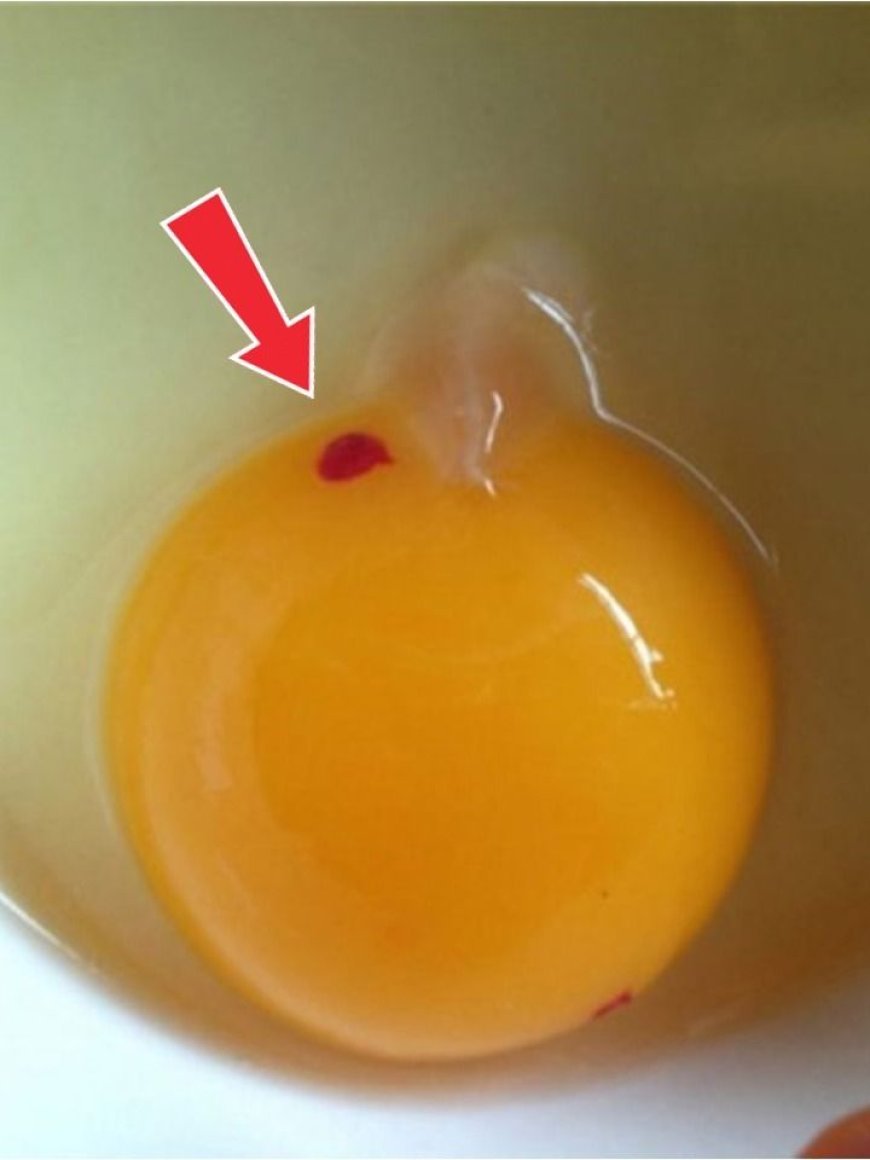Is It Safe to Eat Eggs With Red Spots? A Clear Guide for Everyday Cooks
For many home cooks, cracking open an egg is a simple everyday action—until something unexpected appears. One of the most common surprises is the sight of a small red spot inside the egg, a detail that can cause confusion, hesitation, or even concern. While eggs are a staple in countless households and valued for their versatility and nutrition, most people are unsure what these tiny spots really mean. Understanding their origin and safety can help prevent unnecessary waste and bring more confidence to your cooking routine.

3.
Is It Safe to Eat Eggs With Red Spots? A Clear Guide for Everyday Cooks
Many home cooks have had this moment: you crack open an egg, and instead of a smooth golden yolk, you notice a tiny red spot. It can be surprising, especially if you’re used to clean-looking, store-bought eggs. Some people throw the egg away immediately, while others simply continue cooking and don’t think twice. Because this question comes up often, it’s helpful to understand what these spots really are and whether the egg is still safe to enjoy.
Eggs remain a staple in many American kitchens, especially for older adults who appreciate simple, nutritious foods. Knowing what’s normal and what isn’t can bring peace of mind and help reduce unnecessary waste. With a bit of background, it becomes easier to tell when an egg is perfectly fine to use and when it’s better to set it aside.
Are Eggs With Red Spots Safe to Eat?
Yes. In most cases, an egg with a small red spot is safe to cook and enjoy, as long as it is fully cooked. The spot may look concerning, but it does not indicate harm. If you prefer, you can gently lift it out with the tip of a small utensil before preparing the egg. Many people do this purely for visual reasons, not safety.
You may occasionally notice tiny brown specks in the egg white as well. These come from harmless bits of tissue that the egg picked up as it traveled through the hen’s system. These, too, are safe and do not affect the quality of the egg.
However, unusually colored egg whites—such as pink, green, or distinctly red throughout—should be set aside. These rare signs can indicate that the egg is no longer fresh enough to enjoy safely. When in doubt, it’s always best to choose a different egg.
How Common Are These Red Spots?
Fewer than one egg in a hundred contains a red spot. This is
particularly true for eggs sold in grocery stores, where most undergo a grading process called candling. A bright light is used to check the inside of the egg for imperfections, and eggs with noticeable spots are typically removed before packaging.
This sorting process is not about safety, but about appearance. Most shoppers prefer eggs that look clean and consistent, so stores simply avoid stocking eggs with visible spots.
Farm-fresh eggs are a different story. Because they are not usually graded in the same way, these occasional natural markings are more likely to appear. Brown-shelled eggs may also show spots more often because the darker shell makes these tiny imperfections harder to spot during inspection.
Why Do These Spots Form?
A common belief is that a red spot means the egg was fertilized, but that is not correct. The spot is simply the result of a tiny blood vessel breaking inside the hen’s system. This can happen for many normal reasons and does not affect the egg’s overall quality.
Where the spot appears can offer a clue:
• A spot in the yolk indicates the small vessel broke in the hen’s ovary.
• A spot in the egg white suggests it occurred later, as the egg traveled through the oviduct, the passageway where the egg develops its layers.
These small breaks are a natural occurrence and do not harm the egg in any way.
Best Practices for Handling and Cooking Eggs
Red spots aside, the most important part of enjoying eggs safely is proper storage and cooking. A few easy habits can help keep your kitchen confident and your meals enjoyable.
Storage tips:
• Refrigerate store-bought eggs as soon as you bring them home.
• Farm-fresh eggs may remain at room temperature if they have not been washed, but they should be kept in a cool, shaded place.
• Avoid using eggs with cracked shells, as cracks can allow unwanted bacteria to enter.
Cooking tips:
• Wash your hands before and after handling raw eggs.
• Cook eggs until both the yolk and white are firm.
• Recipes requiring lightly cooked or uncooked eggs should use pasteurized eggs to reduce the chance of spoilage.
• Keep cooked eggs refrigerated and enjoy them within about a week for best quality.
Transporting eggs:
When taking eggs on the go—for a picnic or day trip—keep them in a cooler or insulated bag with an ice pack. Eggs should not sit in direct sunlight or in warm temperatures.
Staying Attentive and Informed
Occasionally, even properly handled food may cause discomfort. If you ever feel unwell after eating, rest, hydrate, and contact a healthcare professional for guidance. While such situations are uncommon, it’s always best to listen to your body.
Understanding what is normal inside an egg—and what isn’t—can help reduce waste and make cooking feel easier and more enjoyable. A small red spot may look surprising, but for most home cooks, it’s simply a natural part of what an egg can look like. With safe handling and proper preparation, eggs remain one of the most versatile and nourishing foods in the kitchen.


























